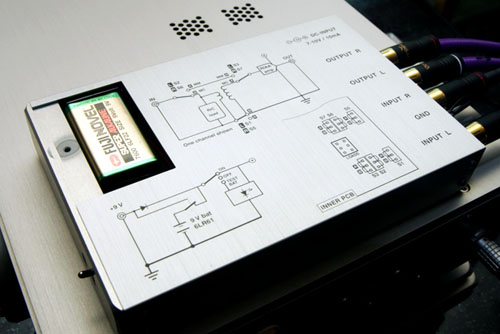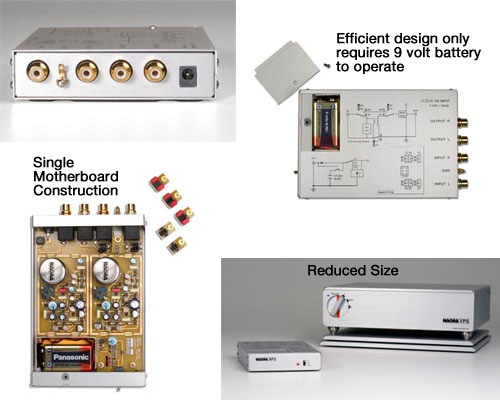 What’s remarkable about the Nagra BPS phono stage is not its small size, although that’s certainly attention-grabbing. instead, it’s the circuitry and well-considered features that are squeezed into this hand-sized chassis that make the BPS noteworthy.
What’s remarkable about the Nagra BPS phono stage is not its small size, although that’s certainly attention-grabbing. instead, it’s the circuitry and well-considered features that are squeezed into this hand-sized chassis that make the BPS noteworthy.
The BPS uses essentially the same circuit as Nagra’s VPS phono stage, but it omits the VPS’s tubes. Like the VPS, it uses custom Nagra step-up transformers to derive its gain — 45 to 60dB, making it suitable for use with moving-coil cartridges. It runs on a nine-volt battery, although wall power is also an option.
The reduced size of the Nagra BPS phono preamplifier is the result of using completely solid-state technology, less costly to implement than Nagra’s valve phonostage version. The BPS electronics consumes so little power that it operates for approximately 100 hours on a single 9-volt battery. Due to using a battery power supply, there is no need for a costly external power supply that is complex to manufacture. The Nagra BPS enjoys an attractive positioning thanks to a simplified approach as regards functions. Nagra however retained the popular load adaptation found on the VPS model, which uses small plug-in modules to attain the desired matching between the phono preamplifier and the specific cartridge. Nagra’s BPS supports either moving-coils (MC) or moving-magnet cartridges (MM) by means of appropriate switching. Assembled on a single motherboard, the electronics use exclusively discrete and military-type components (JAN standard). The amplification is provided by selected and matched bipolar transistors. The capacitors on the signal path are of audiophile quality and the precision resistors are MELF (Metal Electrode Leadless Face). The MC input transformers are designed and wound by Nagra. All components are housed within a Nagra style brushed aluminum case.


